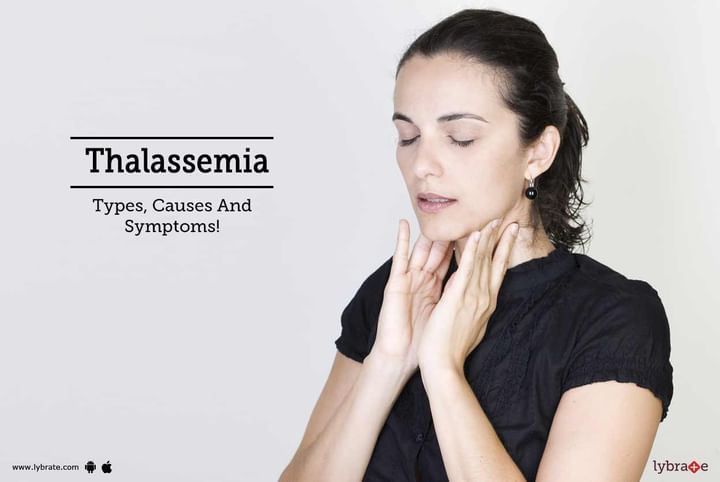Thalassemia - Types, Causes And Symptoms!
Thalassemia is a genetic (i.e., passed from parents to children through genes) blood disorder. People with Thalassemia disease are not able to make enough hemoglobin, which causes severe anemia. Hemoglobin is found in red blood cells and carries oxygen to all parts of the body. When there is not enough hemoglobin in the red blood cells, oxygen cannot get to all parts of the body. Organs then become starved for oxygen and are unable to function properly.
There are two types of Thalassemia disease-
- Alpha Thalassemia disease: There are two main types of Alpha Thalassemia disease. Alpha Thalassemia Major is a very serious disease in which severe anemia begins even before birth. Pregnant women carrying affected fetuses are themselves at risk for serious pregnancy and delivery complications. Another type of Alpha Thalassemia is Hemoglobin H disease. There are varying degrees of Hemoglobin H disease.
- Beta Thalassemia disease: Beta Thalassemia Major (also called Cooley's Anemia) is a serious illness. Symptoms appear in the first two years of life and include paleness of the skin, poor appetite, irritability, and failure to grow. Proper treatment includes routine blood transfusions and other therapies.
Causes of Thalassemia-
Thalassemia occurs when there’s an abnormality or mutation in one of the genes involved in hemoglobin production. You inherit this genetic defect from your parents.
If only one of the parents is a carrier for thalassemia, the child may develop a form of the disease known as thalassemia minor. If this occurs, the born child probably won’t have symptoms, but he/she will be a carrier of the disease. Some people with thalassemia minor do develop minor symptoms.
If both of your parents are carriers of thalassemia, you have a greater chance of inheriting a more serious form of the disease.
Symptoms-
The symptoms depend on the type of thalassemia:
- Thalassemia Minor: Thalassemia minor usually doesn’t cause any symptoms. If it does, it causes minor anemia.
- Beta-thalassemia: Beta-thalassemia comes in two serious types, which are thalassemia major, or Cooley’s anemia, and thalassemia intermedia. The symptoms of thalassemia major generally appear before a child’s second birthday. The severe anemia related to this condition can be life-threatening. Other signs and symptoms include:
- fussiness
- paleness
- frequent infections
- a poor appetite
- failure to thrive
- jaundice, which is a yellowing of the skin or the whites of the eyes
- enlarged organs
This form of thalassemia is usually so severe that it requires regular blood transfusions.
- Alpha-thalassemia: Alpha-thalassemia also has two serious types, which are hemoglobin H disease and hydrops fetalis. Hemoglobin H disease can cause bone issues. The cheeks, forehead, and jaw may all overgrow. Hemoglobin H disease can cause:
- jaundice, which is a yellowing of the skin or the whites of the eyes
- an extremely enlarged spleen
- malnourishment
Hydrops fetalis is an extremely severe form of thalassemia. It occurs before birth. Most individuals with this condition are either stillborn or die shortly after being born.
How is thalassemia diagnosed?
Thalassaemia is often detected during pregnancy or soon after birth.
- Screening during pregnancy: Screening to check if a baby is at risk of being born with thalassemia is offered to all pregnant women.
- Testing after birth or later in life: Newborn babies aren't routinely tested for thalassemia because the test used isn't always reliable soon after birth and the condition isn't immediately dangerous. However, the main form of the condition – beta thalassemia major – is often picked up as part of the newborn blood spot test (heel prick). A blood test can be carried out at any point to diagnose the condition if a child or adult has symptoms of thalassemia and the condition wasn't picked up earlier on.
- Testing for the Thalassemia Trait- A blood test can be done at any time to find out if you have the thalassemia trait and are at risk of having a child with the condition. This can be particularly useful if you have a family history of the condition or your partner is known to carry thalassemia.
If your child has thalassemia, blood tests may reveal:
- A low level of red blood cells
- Smaller than expected red blood cells
- Pale red blood cells
- Red blood cells that are varied in size and shape
- Red blood cells with uneven hemoglobin distribution, which gives the cells a bull's-eye appearance under the microscope
Blood tests may also be used to:
- Measure the amount of iron in your child's blood
- Evaluate his or her hemoglobin
- Perform DNA analysis to diagnose thalassemia or to determine if a person is carrying mutated hemoglobin genes
Treatment for Thalassemia-
The treatment for thalassemia depends on the type and severity of disease involved. Your doctor will give you a course of treatment that will work best for your particular case.
Some of the utilized treatments include:
- blood transfusions
- a bone marrow transplant (BMT)
- medications and supplements
- possible surgery to remove the spleen or gallbladder



+1.svg)
